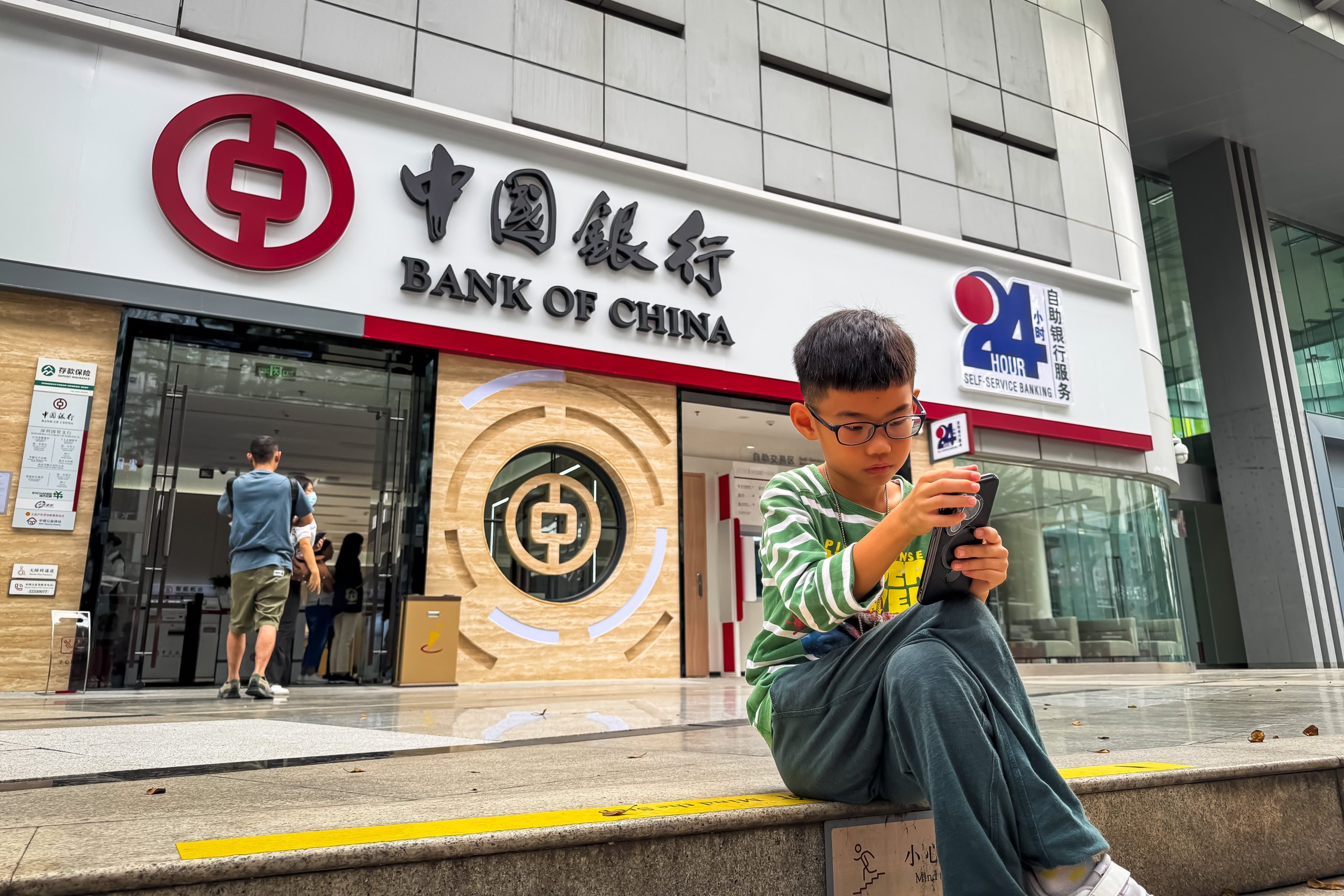Chinese commercial banks have a huge problem.
With consumers and businesses gloomy about the prospects of the world’s second-largest economy, loan growth has stalled. Beijing’s stimulus push has so far not been able to spur consumer credit demand, and is yet to spark any meaningful rebound in the faltering economy.
So what do banks do with their cash? Buy government bonds.
Chinese sovereign bonds have seen a strong rally since December, with 10-year yields plunging to all-time lows this month, dropping by about 34 basis points, according to LSEG data.
“The lack of strong consumer and business loan demand has led the capital flows into the sovereign bonds market,” said Edmund Goh, investment director of fixed income at abrdn in Singapore.
That said, “the biggest problem onshore is a lack of assets to invest,” he added, as “there are no signs that China can get out of deflation at the moment.”
Total new yuan loans in the 11 months through to November 2024 fell over 20% to 17.1 trillion yuan ($2.33 trillion) from a year ago, according to data released by the People’s Bank of China. In November, the new bank lending stood at 580 billion yuan, versus 1.09 trillion yuan a year earlier.
Loan demand has failed to pick up despite a sweeping stimulus measures that Chinese authorities started unveiling since last September, when the economy verged on missing its full-year growth target of “around 5%.”
Goldman Sachs sees growth in the world’s second-largest economy slowing to 4.5% this year, and expect credit demand in December to have slowed further from November.
“There is still a lack of quality borrowing demand as private enterprises remain cautious with approving new investments and households are also tightening purse strings,” said Lynn Song, chief economist at ING.
For this year, authorities have vowed to make boosting consumption a top priority and to revive credit demand with lower corporate financing and household borrowing costs.
Investors may continue to look for “sources of risk-free yield” this year due to the high level of uncertainty amid potential tariff action from abroad, Song said, noting “some question marks still remaining on how strong domestic policy support will be.”
No better alternatives
The slowdown in loans comes as mortgages, which used to fuel credit demand, are still in the stage of bottoming, said Andy Maynard, managing director and head of equities at China Renaissance.
Chinese onshore investors have to contend with a lack of “investable asset to put money in, both in financial market and in physical market,” he added.
Official data Thursday showed China’s annual inflation in 2024 stood at 0.2%, signaling that prices barely grew, while wholesale prices continued to fall, down 2.2%.
Institutions are increasingly bullish on government bonds due to the belief that economic fundamentals will remain weak, coupled with fading hopes for a forceful policy push, said Zong Ke, portfolio manager at Shanghai-based asset manager Wequant.
Ke said the current policy interventions are merely “efforts to prevent economic collapse and cushion against external shocks” and “simply to avoid a freefall.”
‘Perfect storm’
The yield on the U.S. 10-year Treasury has been rising at a faster pace since June and a spike on Wednesday sent the yield to top 4.7%, nearing levels last seen in April.
The widening yield differentials between Chinese and U.S. sovereign bonds could risk encouraging capital outflows and put further pressure on the yuan that has been weakening against the greenback.
Chinese onshore yuan hit a 16-month low against the dollar on Wednesday, while the offshore yuan has been on a multi-month slide since September.
“You have the perfect storm,” said Sam Radwan, founder of Enhance International, naming the lower government bond yields, prolonged real estate crisis and impacts from rising tariffs as risk factors, weighing on foreign investors’ sentiment with onshore assets.
While reducing the appeal of China bonds among foreign investors, the widened yield differentials with U.S. Treasuries has little impact on the performance of Chinese government bonds due to the “small share of foreign funds,” said Winson Phoon, head of fixed income research, Maybank Investment Banking Group.
Silver lining
The falling yields offer a silver lining to Beijing — lower funding costs — as policymakers are expected to ramp up new bond issuance this year, said ING’s Song.
Beijing unveiled a $1.4 trillion debt swap program in November, aimed at easing local government financing crisis.
“For much of 2024, policymakers acted to intervene whenever the 10-year yields hit 2%,” Song said, noting that the PBOC had “quietly stopped intervention” in December.
Investors are expecting the central bank to unveil fresh monetary easing steps this year, such as additional cuts to the main interest rate and the amount of cash that banks must hold as reserves. At the turn of the year, PBOC said it will cut key interest rates at an “appropriate time.”
“The bank will enrich and improve monetary policy toolkit, conduct buying and selling of treasury bonds and pay attention to moves in long-term yields,” according to the statement on Jan. 3.
Prospects of rate cuts, however, will only keep the bond rally going.
Economists at Standard Chartered Bank see the bond rally to continue this year but at a slower pace. The 10-year yield may fall to 1.40% at the end of 2025, they said in a note on Tuesday.
Credit growth may stabilize by mid-year as stimulus policies start to lift certain sectors in the economy, the economists said, leading to a slower decline in bond yields.
China’s central bank said Friday that it would temporarily halt buying government bonds due to excess demand and short supply in the market.
International: Top News And Analysis
Read the full article <a href="Read More” target=”_blank”>here.


